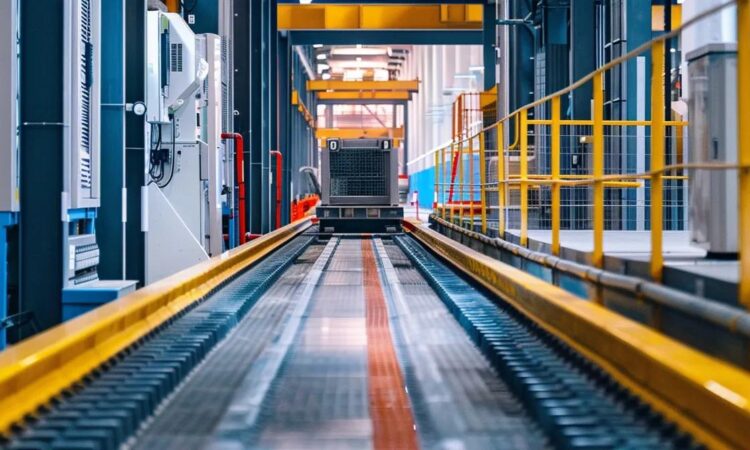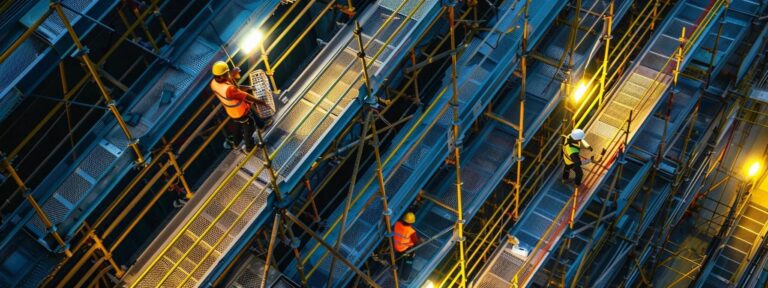Walkway Safety Systems: Integrating With Self-Retracting Fall Protection
Understanding Essential Walkway Safety Systems
Walkway safety systems protect individuals working or traveling on elevated or vulnerable walkways. They combine barriers, anchorage points, guardrail systems, and fall arrest equipment to reduce injury risk by ensuring a stable, secure passage over hazards. Our approach incorporates design-installation methods alongside annual-maintenance planning to optimize safety, and if you’re interested in exploring comprehensive solutions, get a free quote for further details.
Defining Walkway Safety Systems and Their Purpose
These integrated systems, provided by us fall protection, secure pathways, bridges, ramps, and other elevated surfaces to prevent falls. They work by controlling the movement of safety harnesses and fall arrest gear during slips or imbalances. By combining both passive (guardrail systems) and active (retractable lifeline) measures, they support compliance with occupational safety regulations. In addition, our design-installation and annual-maintenance services ensure that these systems continue to perform optimally. For example, industrial concrete walkways often use handrails with fall arrest anchors for complete safety, so feel free to get a free quote to upgrade your facilities.
Types of Walkway Surfaces and Structures Requiring Safety Integration
Walkway safety systems must adapt to various surfaces such as concrete, metal, wood, and glass, with guardrail systems and design-installation practices tailored for each material. Elevated platforms, rooftops, pedestrian bridges, and loading docks all require specialized integration, as detailed in the industries we serve section. A flat roof might need edge protection with built-in lifeline anchors along with annual-maintenance checks, while a mezzanine may require mobile tie off points to maintain accessibility. For additional insights on safety, our blog highlights us fall protection strategies and provides information via anchor text: ladder systems. Such adaptability is essential to address the unique hazards of each environment.
Key Components of Comprehensive Walkway Safety
A complete system typically includes handrails, guardrails from guardrail systems, non-slip surfaces, and fall arrest anchors that comply with us fall protection standards. Advanced solutions like self-retracting lifelines (SRLs), implemented with a design-installation approach, dynamically adjust tension to arrest a fall instantly. Each component is engineered with specific load-bearing capacities and movement ranges in mind; for example, safety harness anchor points are rated for specific forces and non-slip materials are designed with established friction coefficients to facilitate annual-maintenance checks.
Regulatory Standards for Walkway Safety Systems
Design and implementation through our design-installation approach follow stringent guidelines set by OSHA and ANSI. These guidelines specify minimum load ratings, design factors, and periodic safety tests as part of our annual-maintenance checks to ensure that components—from guardrail systems to SRLs—function reliably. Compliance not only reduces legal liabilities but also establishes a proven, safe environment for users and illustrates our commitment to us fall protection. For further insights and to get a free quote, please visit our blog.
Assessing Risks on Elevated Walkways
Risk assessments identify potential fall hazards by evaluating factors such as material, weather conditions, user behavior, and structural integrity. Techniques such as advanced modeling and analysis of historical injury data guide the selection of safety equipment, including guardrail systems and design-installation expertise in securing work areas. For example, a rooftop in a high-wind area may require enhanced anchorage—supported further by anchor text: ladder systems—and a specialized SRL to counteract gust-related risks, ensuring annual-maintenance protocols and us fall protection measures are in place.
Exploring Self-Retracting Lifeline Systems for Fall Protection
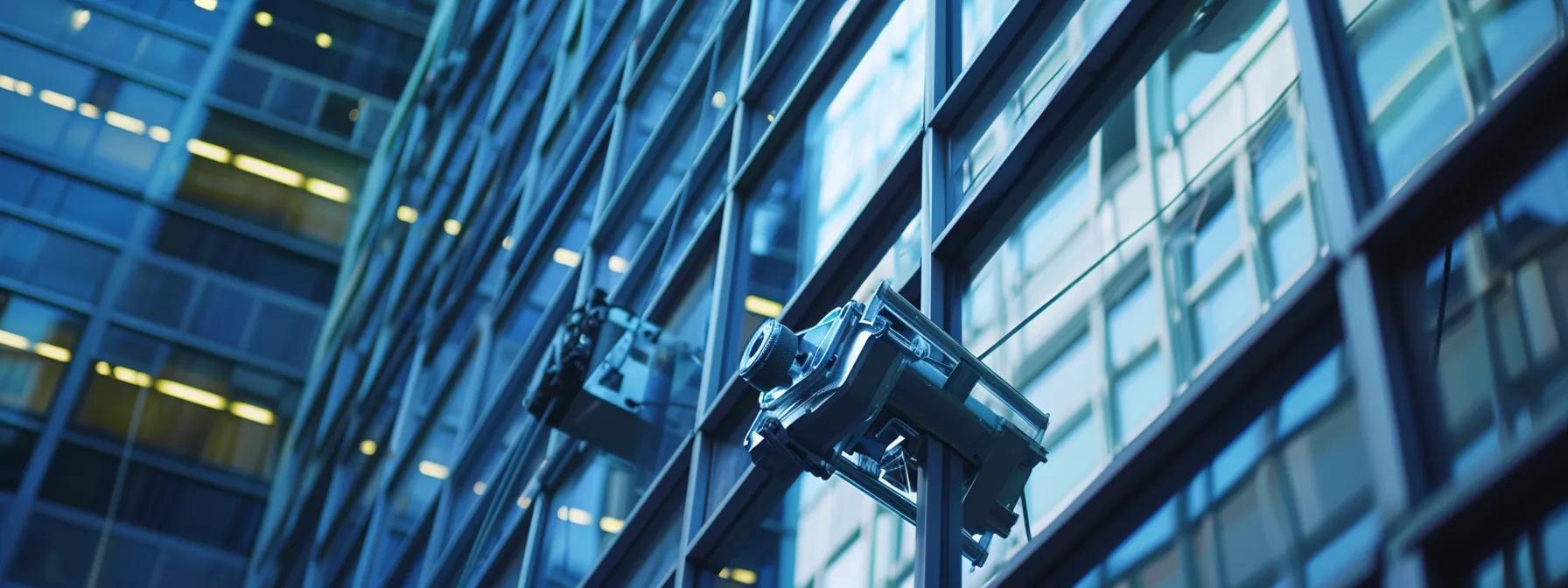
Self-retracting lifeline (SRL) systems are dynamic fall arrest devices designed to protect workers at height and are a critical component of us fall protection incorporated in modern design-installation practices. They function by automatically locking the cable or webbing when a fall is detected, and implementing routine annual-maintenance can further ensure that the impact force on the body is minimized within seconds.
What Are Self-Retracting Lifeline (SRL) Systems?
SRLs are mechanical devices that deploy a cable or webbing quickly upon detecting sudden force, making them a crucial component in us fall protection solutions. Integrated with full-body harnesses, these systems not only provide rapid fall arrest through a braking mechanism that activates during rapid acceleration, but they also form part of our design-installation process for maximum efficiency. Regular annual-maintenance is recommended to ensure these systems continue to function optimally. For further safety insights, including details on guardrail systems, be sure to visit our blog and get a free quote from our experts.
How Self-Retracting Lifelines Function to Arrest Falls
SRLs work by keeping a short, taut lifeline during normal movement, which is a key component of us fall protection. In a fall, a sensor triggers an immediate lock that slows the descent and minimizes impact – a functionality that benefits from our design-installation process and regular annual-maintenance checks. Typically, these devices can arrest falls within a short distance, significantly reducing the risk of traumatic injury, and are crucial in applications such as anchor text: ladder systems in the industries we serve.
Advantages of Using SRLs Over Traditional Lanyards
SRLs offer controlled deceleration, reduced free-fall distance, and enhanced mobility. As part of us fall protection, they maintain minimal slack between the harness and the safety anchor, providing a more precise and safer fall arrest while allowing workers to move freely. Our design-installation approach, along with routine annual-maintenance, ensures that the systems meet the highest standards, benefiting the industries we serve. Additionally, integrating guardrail systems fortifies safety measures, enhancing efficiency in high-risk environments.
Different Types and Classes of Self-Retracting Lifelines
SRLs are available in various classes to suit different work environments. industries we serve have observed that class 1 devices serve low-impact conditions, while classes 2 and 3, developed through meticulous design-installation protocols, offer higher arrest forces for more hazardous settings. Many SRLs include energy absorption features to further lessen impact force. Manufacturers provide critical specifications such as maximum arrest force and arrest distance to help users select the correct system, ensuring us fall protection standards. For additional details, please visit our blog and get a free quote.
Applicable Standards and Certifications for SRL Systems
SRLs must meet strict industry standards, including those set by ANSI/ASSE and OSHA. for optimal performance, companies often consider design-installation processes and get a free quote before commencing annual-maintenance. These standards define performance criteria such as minimum dynamic test loads, energy absorption limits, and retraction speeds. certification by recognized bodies, especially in industries we serve for applications like anchor text: ladder systems and us fall protection, verifies consistent performance under rigorous conditions, reinforcing safety management and system trustworthiness.
The Critical Role of Fall Protection Anchors
Fall protection anchors, an essential element of us fall protection, are the fundamental connection points between a worker’s lifeline and a secure, immovable structure designed for design-installation excellence. They provide a robust foundation capable of resisting high forces and ensuring the overall integrity of the fall arrest system, much like the reliability found in guardrail systems. For more details on how our solutions work, don’t hesitate to get a free quote.
Defining Fall Protection Anchors and Their Significance
These anchors are fixed points attached to stable substrates used for connecting fall arrest systems like SRLs and lanyards. They play a pivotal role in us fall protection, ensuring that even in scenarios that require careful design-installation and regular annual-maintenance, safety is not compromised. Their ability to withstand high dynamic loads during falls is critical; without them—and without complementary guardrail systems recommended by industries we serve—even advanced fall arrest systems can fail, leading to severe consequences. Typically made from high-strength materials such as stainless steel, these anchors distribute fall forces safely.
Types of Fall Protection Anchors Suitable for Walkway Systems
Different settings require various anchor types, including beam clamps, anchor bolts, and permanent anchor plates. beam clamps are useful in retrofit situations where permanent structural changes cannot be made, while anchor bolts and plates are installed during construction to ensure even load distribution. for instance, embedded anchor bolts in concrete walkways provide secure attachment points that meet both strength and regulatory standards. our design-installation approach, paired with routine annual-maintenance, ensures comprehensive safety measures throughout the project lifecycle. additionally, we integrate us fall protection measures with guardrail systems to enhance stability, and offer anchor text: ladder systems for specialized applications. for more information, get a free quote on our services.
Load Bearing Capacities and Structural Requirements for Anchors
Anchors, an essential component in us fall protection, are engineered to handle loads often exceeding 5,000 pounds. They must be installed on materials capable of dissipating high forces, such as reinforced concrete, steel frameworks, or guardrail systems. Detailed engineering calculations and design-installation procedures ensure that the anchors’ load-bearing capacities meet or exceed regulatory guidelines, while regular annual-maintenance helps in effectively transferring forces during a fall without compromising structural integrity.
Proper Installation Techniques for Various Anchor Types
Effective installation is crucial in design-installation projects. For beam clamps, full contact along the beam surface is required, aligning with the industries we serve, while anchor bolts need meticulous drilling, cleaning, and fastening. Manufacturers’ guidelines and standards from OSHA and ANSI detail steps such as surface preparation, alignment, torque settings, and post-installation testing, with annual-maintenance following to ensure that each anchor performs reliably under emergency conditions and provides added us fall protection.
Inspection and Maintenance of Fall Protection Anchors
Regular inspections—typically monthly or quarterly—are essential to verify both the visual and mechanical integrity of each anchor. For example, many companies performing design-installation projects incorporate annual-maintenance protocols to ensure that each anchor remains compliant with us fall protection standards, especially for clients in the industries we serve. Maintenance tasks may include tightening fasteners, applying corrosion inhibitors, or replacing worn parts critical to systems like anchor text: ladder systems and guardrail systems. Detailed documentation of these inspections is key to tracking system integrity and ensuring ongoing performance in preventing falls. For more detailed insights, visit our blog or get a free quote about us services.
Integrating Self-Retracting Lifelines With Walkway Safety Systems
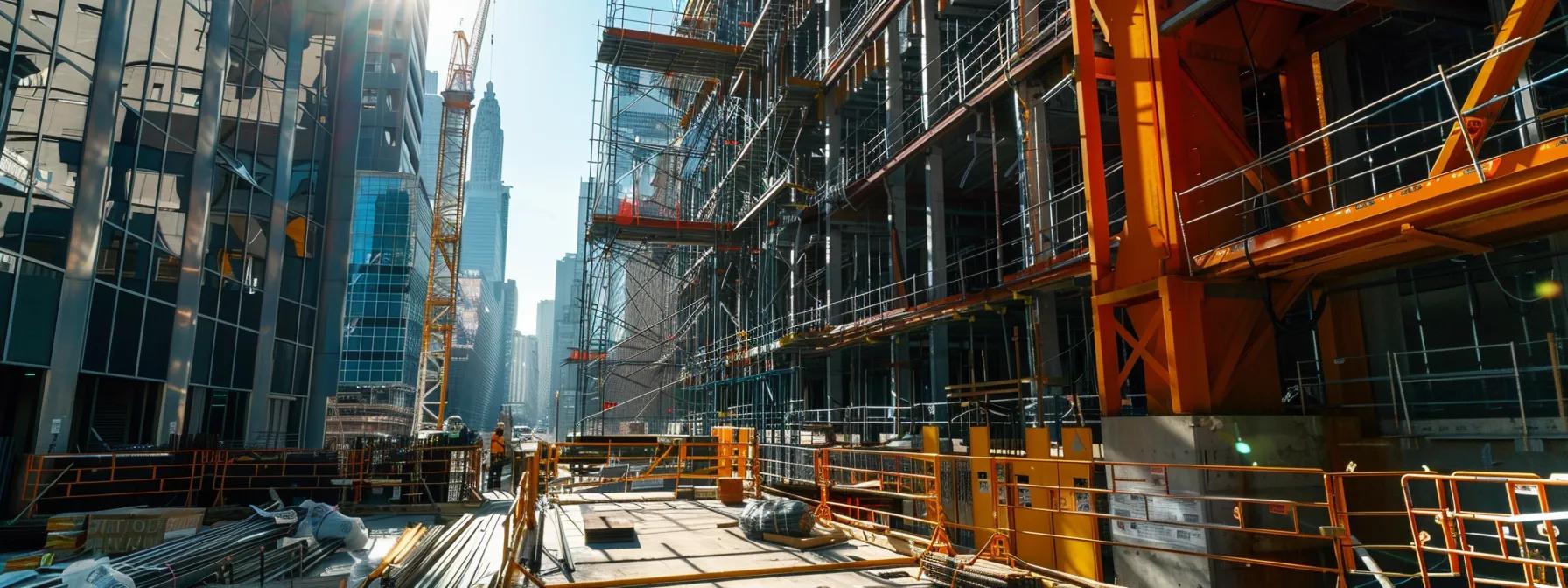
Integrating SRLs into walkway safety systems creates a layered defense that enhances both fall arrest and worker mobility. This integration maximizes protection by combining dynamic SRL capabilities with robust fall protection anchors.
Designing Integrated Systems for Seamless Operation
An integrated system combines walkway surfaces, fall protection anchors, and SRLs into a unified safety solution. The design process ensures that each component works together seamlessly and meets stringent safety criteria. Advanced simulation software is often used to model and validate system performance, resulting in solutions that both arrest falls and allow unimpeded movement.
Compatibility Considerations Between Walkways, SRLs, and Anchors
Ensuring compatibility between the walkway, SRLs, and anchors is critical to prevent system failure. Components must be carefully selected so that their connector interfaces and load distribution mechanisms work in harmony. This requires close collaboration among engineers, manufacturers, and installers, along with on-site evaluations and material testing to confirm that the integrated system can withstand everyday stresses and emergency events.
Strategic Placement of Fall Protection Anchors Along Walkways
Proper anchor placement is key to comprehensive safety. Anchors should be evenly distributed and strategically located at points such as changes in elevation, corners, and near edges. This placement, guided by risk assessments of fall distances and impact forces, maximizes the protective envelope and minimizes unsupported spans. For example, a long pedestrian bridge may require extra anchors at mid-span and both ends.
Ensuring Freedom of Movement With Self-Retracting Lifeline Systems on Walkways
A major advantage of SRLs is their ability to allow free movement while maintaining fall protection. SRLs retract completely when not under tension, preventing entanglement or drag. This design enables workers to maintain natural movement without compromising safety, an essential requirement on busy walkways.
Case Studies of Successful Integrated System Implementations
Real-world examples demonstrate the effectiveness of integrated systems. In one commercial facility, a combined system of guardrails, strategic anchor placement, and advanced SRLs reduced fall-related incidents significantly within the first year. Another rooftop maintenance program reported enhanced worker confidence and continued operations during adverse weather. These cases show that well-designed integrated safety solutions not only protect workers but also improve overall operational efficiency and regulatory compliance.
Best Practices for Installation and Use of Integrated Systems
Adopting best practices is crucial for maintaining integrated fall protection systems. These practices include thorough pre-installation planning, precise installation methods, comprehensive user training, and well-developed rescue plans.
Pre-Installation Planning and Site Assessment
Effective planning begins with a detailed site assessment to identify hazards and structural challenges. Evaluation of the walkway’s material, load capacities, and environmental conditions is essential for selecting the appropriate safety components. During this phase, surveys and simulations help determine the optimal anchor placement and confirm that the chosen SRL systems meet both operational and regulatory requirements.
Step-by-Step Installation Guide for Walkway and SRL Systems
A detailed installation guide ensures that the integrated system is secure and compliant. Key steps include: 1. Preparation: Clean the walkway and prepare all mounting surfaces. 2. Anchor Installation: Install fall protection anchors according to manufacturer guidelines. 3. System Integration: Attach SRLs to the anchors and verify proper alignment and secure connections. 4. Component Testing: Conduct dynamic and static load tests to ensure functionality. 5. Documentation: Record installation details, test results, and compliance certifications for future reference.
Following these steps minimizes errors and guarantees that every component functions reliably during a fall event.
User Training for Safe Operation of Integrated Fall Protection
User training is paramount. Training should include proper use of personal protective equipment, understanding of SRL functionality, and emergency procedures. Hands-on sessions, instructional modules, and periodic refresher courses can help ensure that all personnel operate the system safely and confidently.
Addressing Potential Hazards Like Swing Falls and Edge Protection
Swing falls, where a worker might move laterally during a fall, require additional safeguards. Integrating edge protection measures such as physical barriers or padding and ensuring proper tension in SRLs help limit lateral movement. Supplementary training and engineering controls are also essential to mitigate these risks.
Developing a Comprehensive Rescue Plan
A robust rescue plan is vital for system effectiveness. The plan should outline clear rescue procedures, designate rescue personnel, provide communication protocols, and offer step-by-step instructions for safe worker evacuation. Regular rescue drills ensure that teams are prepared to respond quickly and effectively, minimizing downtime and reducing further injury risks.
Maintaining and Inspecting Your Integrated Safety Solution
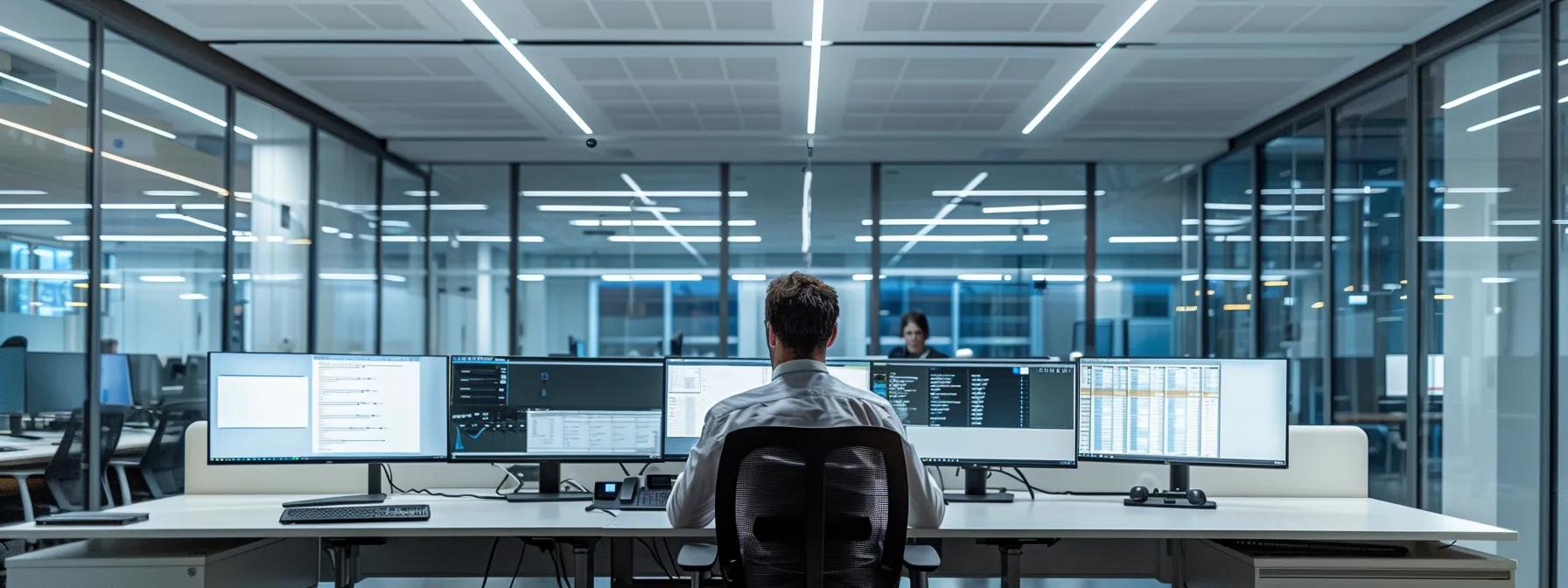
Ongoing maintenance and regular inspections are crucial to ensure that integrated safety systems perform optimally and remain compliant with safety standards. A proactive maintenance program extends the system’s lifespan and overall reliability.
Regular Inspection Schedules for Walkway Surfaces and Structures
Walkway surfaces and structures should be inspected regularly for wear, material degradation, and structural integrity using both visual checks and instrument-based methods. These inspections—whether monthly, quarterly, or annually—support safety compliance by identifying issues early and facilitating timely repairs or component replacements.
Detailed Inspection Procedures for Self-Retracting Lifeline Systems
SRL systems require rigorous inspections to verify mechanical and functional integrity. Typical checks include verifying proper retraction speed, responsiveness of the braking system, and ensuring that the cable or webbing shows no signs of damage or wear. Regular calibration and simulated load testing are also essential, with detailed logs maintained for each inspection.
Checking and Testing Fall Protection Anchors for Integrity
Fall protection anchors must be routinely examined through load testing, torque verification, and visual inspections for corrosion or material fatigue. In some cases, non-destructive testing methods such as ultrasonic inspection may be used to detect hidden flaws. Documenting these assessments ensures that any compromised anchors are promptly replaced, preserving the overall system integrity.
Documenting Inspections and Maintenance Activities
Keeping detailed records of all inspections and maintenance activities is a best practice essential for audit readiness and long-term system health. Logs should note the inspection date, personnel involved, test results, and any corrective actions taken, providing a comprehensive overview of the system’s status.
Recognizing When to Retire or Replace System Components
Over time, components like SRLs, anchors, or even the walkway surface itself may degrade. Manufacturers typically provide guidelines on service life and replacement intervals. Regular inspections can identify early signs of wear or failure, allowing timely replacement before a complete system failure occurs.
Frequently Asked Questions
Q: What are the primary functions of walkway safety systems?
A: They provide layered fall protection by integrating physical barriers, non-slip surfaces, and dynamic fall arrest equipment such as self-retracting lifelines to enhance user safety on elevated walkways.
Q: How do self-retracting lifeline systemsprotect workers during a fall?
A: They automatically retract and lock in place when a fall is detected, reducing free-fall distance and decelerating the fall to arrest movement safely.
Q: What materials are typically used for fall protection anchors?
A: Anchors are commonly made from high-strength materials like stainless steel or reinforced concrete, engineered to withstand dynamic loads exceeding 5,000 pounds.
Q: Why is regular inspection of integrated safety systems important?
A: Regular inspections ensure that all components—walkways, SRLs, and anchors—remain in optimal condition and compliant with safety standards, reducing the risk of system failure.
Q: How are compatibility issues between different system components addressed?
A: Engineers select components based on matching specifications and performance standards, performing on-site evaluations and ensuring proper integration through coordinated design and installation.
Q: What should be included in a comprehensive rescue plan for fall protection systems?
A: A rescue plan should detail procedures, designate rescue personnel, outline communication protocols, and include step-by-step instructions for safely evacuating a fallen worker.
Q: What regulatory standards affect walkway safety and fall protection systems?
A: Standards from OSHA and ANSI/ASSE define performance criteria, load capacities, installation procedures, and regular inspection intervals to ensure uniform safety compliance.
Final Thoughts
Integrated walkway safety systems that incorporate self-retracting lifelines and robust fall protection anchors offer a comprehensive solution to minimize fall hazards in elevated work environments. Their design requires careful planning, precise installation, and ongoing maintenance to ensure long-term reliability. By adhering to regulatory standards and implementing rigorous inspection protocols, employers can enhance worker safety and overall operational efficiency. Advancements in fall protection technology continue to drive integration innovations that lead to safer workspaces and reduced accident rates.
Summary Table: Key Components and Benefits
Before concluding, consider the following summary table which organizes key data regarding components of integrated walkway safety systems:
| Component | Function | Key Benefit | Example Specification |
|---|---|---|---|
| Walkway Surface | Provides traction and stability | Reduces slip risk | Non-slip concrete with friction coefficient ≥ 0.6 |
| Fall Protection Anchor | Secure point for safety equipment | Resists >5,000 lbs dynamic load | Stainless steel anchor bolts |
| Self-Retracting Lifeline (SRL) | Arrests falls, minimizes free-fall | Premium fall arrest within 4 ft | Locking mechanism activates in <0.2 sec |
| Guardrails/Handrails | Creates physical barriers | Limits access to fall risk zones | Continuous rail system (height ≥42 inches) |
This table encapsulates the strength of an integrated safety system by correlating each component’s function, benefit, and specifications. Through comprehensive integration, workplaces benefit from a resilient safety culture that ensures operational continuity while protecting their workforce.
Maintaining high safety standards with integrated systems not only meets regulatory requirements but also demonstrates a strong commitment to employee welfare. As industries evolve, continued innovations in walkway safety systems set new benchmarks for occupational safety and fall prevention.

